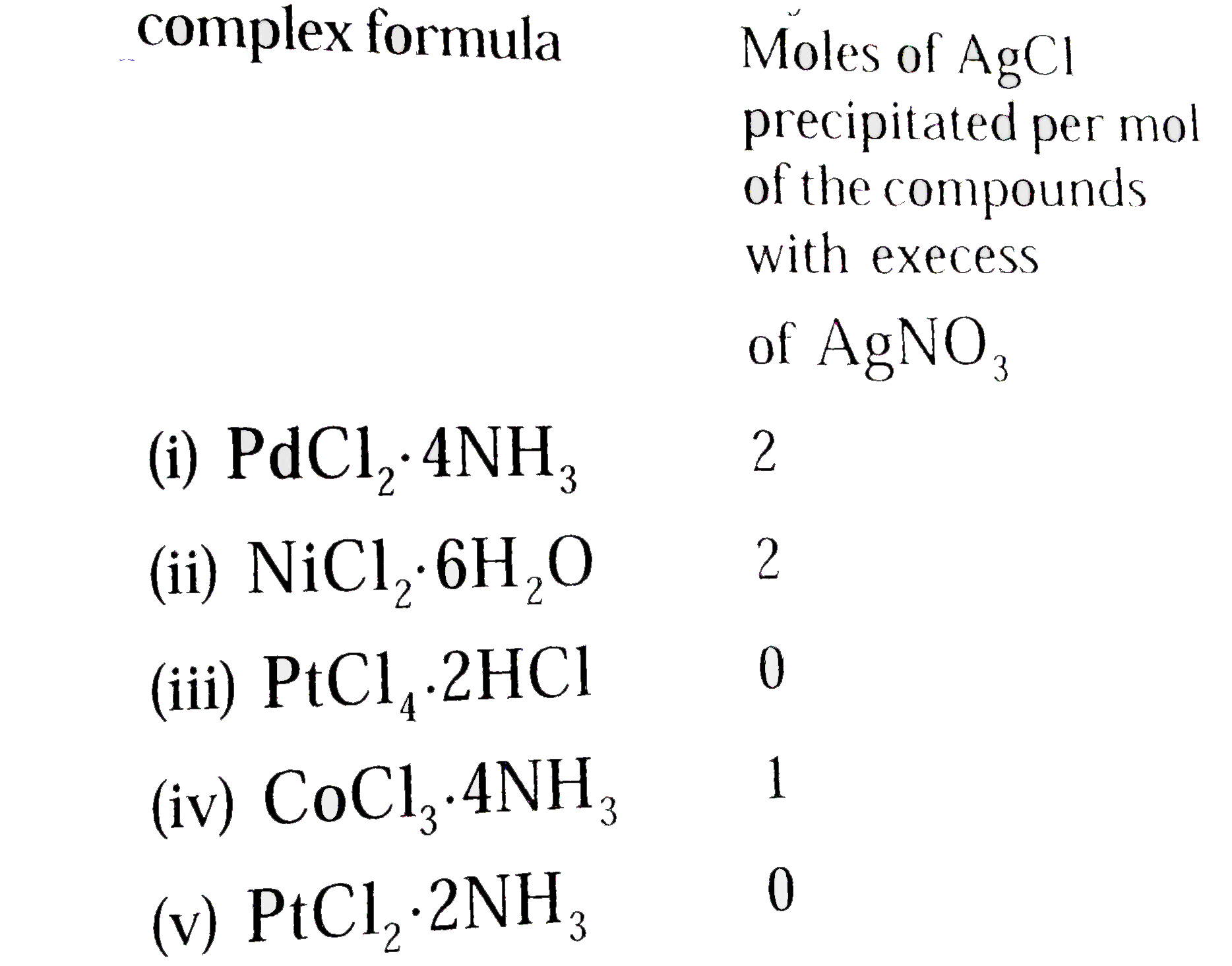Complete Solutions to LEVEL - IV of chapter COORDINATION COMPLEXES of Class 12 book with complete answers and questions
| Class 12 | CHEMISTRY |
| Chapter | COORDINATION COMPLEXES |
| NARAYANA | LEVEL - IV |
| Number Of Questions | 23 |
| Academic Year | 2023-24 |
Which is a low spin complex?
View SolutionAqueous solution of `Ni^(2+)` contains `[Ni(H_(2)O)_(6)]^(2+)` and its magnetic moment is 2.83 B.M. When ammonia is added in it, the predicted change in the magnetic moment of solution is:
View SolutionWhich of the following complexes is a paramagnetic complex?
View SolutionWhich of the following are paramagnetic?
View SolutionWhich of the following pairs of d-electron configuration exhibit both low and high spin tetrahedral complex
View SolutionAssign the hybridisation, shape and magnetic moment of `K_(2)[Cu(CN)_(4)]`
View SolutionWhich of the following is most stable?
View SolutionWhich of the following complex formed by `Cu^(2+)` ions is most stable?
View SolutionThe colour of the coordination compounds depends on the crystal field splitting . What will be the correct order of obsorption of wavelength of light in the visible region, for the comolexes, `[Co(NH_(3))_(6)]^(3+)`m and `[Co(H_(2)O)_(6)^(3+)`?
View SolutionIndicate the complex ion which shows geometrical isomerism.
View SolutionWhen 1 mol `CrCl_(3).6H_(2)O` is treated with excess of `AgNO_(3)`, 3 mol of `AgCl` are obtained. The formula of the coplex is
View SolutionWhen 0.1 mol `CoCl_(3)(NH_(3))_(5)` is treated with excess of `AgNO_(3)`, 0.2 mole of AgCl are obtained. The conductivity of solution will correspond to
View SolutionThe correct IUPAC name of `[Ot(NH_(3))_(2)Cl_(2)]` is
View SolutionThe stabilization of coordination compound due to chelation is called the chelate effect. Which of the following is the most stable complex species?
View SolutionThe CFSE for octahedral `[CoCl_(6)]^(4-)` is `18,000 cm^(-1)`. The CFSE for tetrahedral `[CoCl_(4)]^(2-)` will be
View SolutionDue to the presence of ambidenate ligands coordination compounds show isomerism. Palladium complexes of the type `[Pd(C_(6)H_(5))_(2)(SCN)_(2)]` & `[Pd(C_(6H_(5))_(2)(NCS)_(2)]` are
View SolutionThe compounds `[Co(SO_(4))(NH_(3))_(5)]Br` and `[Co(SO_(4))(NH_(3))_(5)]Cl`
View SolutionWhich of the following is not chelating agent
(a) Thiosulphate
(b) Oxalato
(c ) Glycinato
(d) Ethylene diamine .
View SolutionWhich of the following species is not expected to be a ligand?
View SolutionWhat kind of isomerism exists between `[Cr(H_(2)O)_(6)]Cl_(3)` (violet) and `[Cr(H_(2)O)_(5)Cl].H_(2)O` (greyish-green)?
View SolutionIUPAC name of `[Pt(NH_(3))_(2)Cl(NO_(2))]` is
View SolutionOn the basis of the following observations made with acqueous solutions. In which of the following complexes the central metal atom exhibits secondary valency is six

View SolutionCalculate the overall complex dissociation equilibrium constant for the `[Cu(NH_3)_4]^(2+)` ion, given that `beta_4` for this complex is `2.1xx10^(13)`
View Solution
LEVEL - IV questions and complete solutions for chapter COORDINATION COMPLEXES of NARAYANA CHEMISTRY (HINGLISH) of Class 12
All Exercises from NARAYANA Class 12 CHEMISTRY COORDINATION COMPLEXES
- Additional questions page-155
- C.U.Q
- Comprehension Questions
- Comprehension-1
- Comprehension-2
- Comprehension-3
- Comprehension-4
- Comprehension-5
- Compreshession type question
- EXERCISE -1
- EXERCISE -2
- EXERCISE -3
- EXERCISE -4
- EXERCISE-5
- EXERCISE-6
- EXERCISE-7
- EXERCISE-8
- EXERCISE-9
- FILL IN THE BLANKS
- Integer Type Questions
- LEVEL - IV
- LEVEL - V
- LEVEL-I
- LEVEL-I (H.W)
- LEVEL-II
- LEVEL-II (H.W)
- LEVEL-III
- Matrix Matching Questions
- Multiple Answer Questions
- PREVIOUS AIEEE QUESTIONS
- SINGLE ANSWER QUESTIONS
- Statement Type
- W.E.